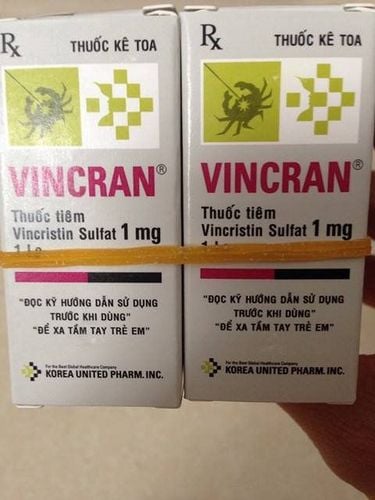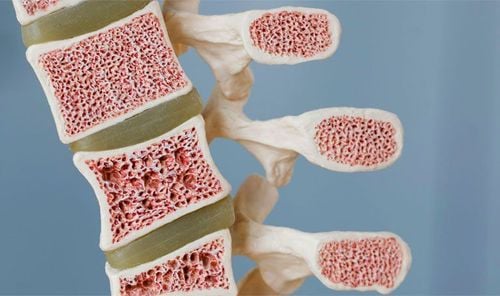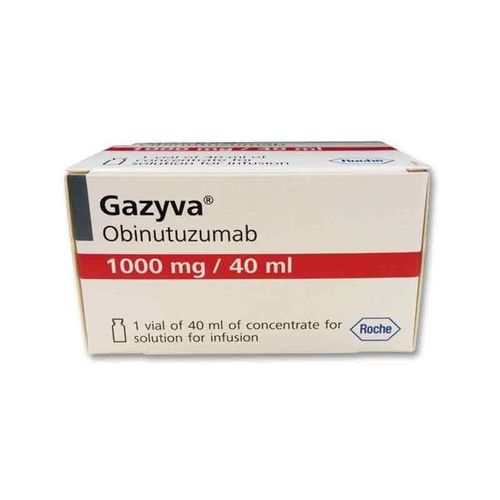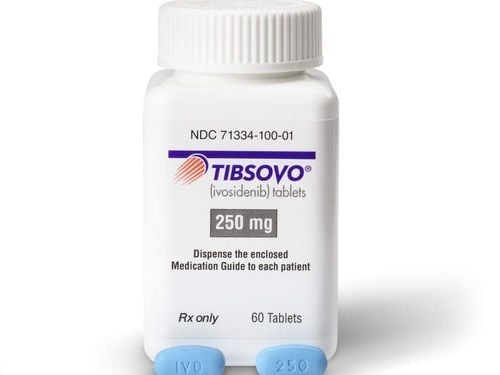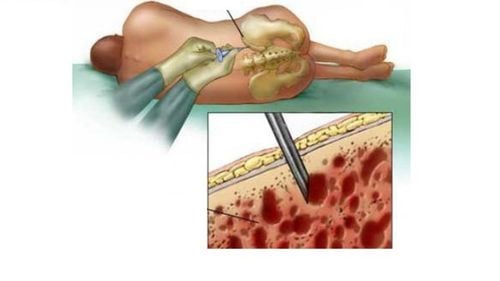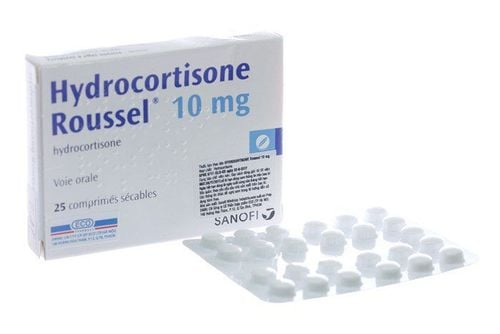This is an automatically translated article.
Unspecified monoclonal gammopathy is a disease characterized by the presence of monoclonal protein or M protein in the patient's blood. These are abnormal proteins that are derived from white blood cells that reside in the bone marrow, also known as plasma. In some cases, patients with unspecified monoclonal gammopathy may progress to malignancies such as leukemia.
1.Overview of unspecified monoclonal gammopathy
Monoclonal Gammopathy of Undetermined Significance (MGUS) This is the term for a dysfunction of plasma white blood cells in which plasma cells or those responsible for producing antibodies produce abnormal proteins such as monoclonal proteins and M proteins. These proteins are known as abnormal antibodies and can be found in blood or urine samples from patients. An increase in the number of abnormal proteins causes the condition to overwhelm normal healthy cells and destroy them. Unspecified monoclonal gammopathy shares many similarities with myeloma, however, the concentration of abnormal antibodies and the number of plasma white blood cells in the bone marrow is lower and it is rarely manifested by myeloma. severe symptoms or conditions. However, unspecified monoclonal gammopathy can progress to hematologic malignancies at an approximate rate of 1.5% per year. This makes annual follow-up in every patient necessary for timely detection and more effective treatment.
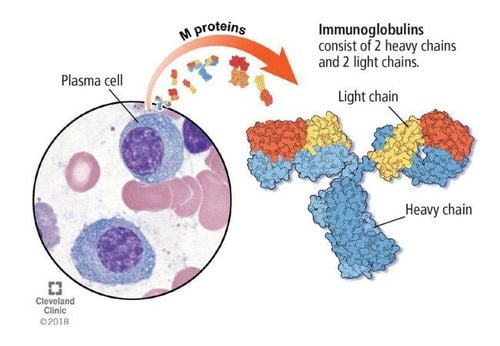
Bệnh Gammopathy thể đơn dòng không xác định có thể tiến triển thành ác tính
The frequency of unspecified monoclonal gammopathy in the community is received about 5% and is concentrated in the elderly group (usually over 70 years old). The disease is reported to be more common in men and of African or African American races. People with family members with the disease have a higher risk of developing monoclonal gammopathy of unspecified disease than others. If the disease does not progress to malignancy, the patient just needs to follow the doctor's regular follow-up schedule without needing any treatment.
2. Unspecified monoclonal Gammopathy signs
Most people with unspecified monoclonal gammopathy do not experience many prominent signs or symptoms. Many patients may develop erythema or neurological problems such as numbness or tingling. Manifestations of severe renal disease may also be found in an unspecified group of monoclonal gammopathy patients.
When detecting abnormal symptoms, the patient should see a doctor at medical facilities for a thorough examination and consultation. Although the symptoms of monoclonal gammopathy are not specific and can be found in many other common diseases, the patient should not be subjective because the opportunity to follow up may be missed when the disease has not progressed. develop into malignancies. Visiting a doctor is always a useful measure for patients to choose the best option.

Nổi phát ban có thể là dấu hiệu của bệnh Gammopathy thể đơn dòng không xác định
3. Diagnosis of monoclonal gammopathy unspecified
The clinical symptoms of unspecified monoclonal gammopathy are often heterogeneous and nonspecific, so most diagnoses of unspecified monoclonal gammopathy are made incidentally during routine laboratory tests. tests for other health problems.
Unspecified monoclonal gammopathy is a common age-dependent health condition and is characterized by an increased number of plasma white blood cells present in the bone marrow. A patient may be diagnosed with monoclonal gammopathy of indeterminate form if the following four criteria are met:
Monoclonal protein concentration < 30 g/l Plasma white blood cells make up less than 10% of the bone marrow None evidence of marrow injury, anemia, hypercalcemia, or kidney disease No other B-cell infiltrative disorders. Many different diseases can coexist with unspecified monoclonal gammopathy, and monoclonal protein may be the first finding before the following are diagnosed:
HIV/AIDS Non-hodgkin lymphoma Chronic lymphocytic leukemia Hepatitis C Connective tissue diseases such as systemic lupus erythematosus Immunosuppression after organ transplant Tempi syndrome Guillain-Barre syndrome

Xét nghiệm công thức máu giúp chẩn đoán bệnh gammopathy thể đơn dòng không xác định
To make a diagnosis of monoclonal gammopathy indeterminate, the doctor needs to order a number of basic tests to identify as well as differentiate it from other diseases, including:
Blood count Quantification of type of abnormal protein in the blood Quantify abnormal protein in the urine Urea creatinine test to evaluate kidney function Bone system imaging such as X-ray or magnetic resonance imaging if the patient presents with abnormal symptoms bone related. Bone marrow assessment: You may be asked to perform a bone marrow aspiration or bone marrow biopsy to remove tissue from the bone marrow. From there, the doctor will analyze the ingredients inside, importantly the percentage of plasma white blood cells.
4. Treatments for monoclonal gammopathy unspecified
If diagnosed with unspecified monoclonal gammopathy, the patient will be asked to conduct periodic follow-up every six months to one year to assess disease progression and detect complications into malignancies. count if any. Patients will be guided through the clinical manifestations of the disease such as:
Bone pain Body weakness Unexplained weight loss Headache, dizziness Hearing and vision impairment Numbness and sensation paresthesia Pale mucosal skin Abnormal bleeding Enlarged lymph nodes Serum protein electrophoresis should be repeated every year and if elevated levels of monoclonal protein are detected, the patient should be transferred. to clinical hematologists. Then, hematologists will evaluate a case of unspecified monoclonal gammopathy through investigations involving the skeletal system such as x-rays, blood calcium levels, and impaired renal function. , test for Bence Jones protein in urine and bone marrow biopsies. A detected bone marrow malignancy will require treatment as soon as possible based on discussion between the hematologist and the patient himself.
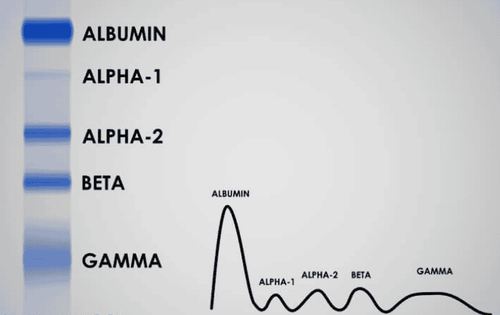
Bệnh nhân gammopathy cần được xét nghiệm điện di protein huyết thanh hàng năm
During the monitoring process of monoclonal gammopathy indeterminate, the patient should maintain a reasonable lifestyle by the following measures:
Eat a lot of green vegetables and fruits Moderate and reasonable lifestyle Do not overwork Avoid stress from work and life Regular exercise and sports Follow the doctor's follow-up schedule Vinmec International General Hospital is a high quality medical facility in Vietnam Nam with a team of highly qualified medical professionals, well-trained, domestic and foreign, experienced.
A system of modern and advanced medical equipment, possessing many of the best machines in the world, helping to detect many difficult and dangerous diseases in a short time, supporting the diagnosis and treatment of doctors the most effective. The hospital space is designed according to 5-star hotel standards, giving patients comfort, friendliness and peace of mind.
Please dial HOTLINE for more information or register for an appointment HERE. Download MyVinmec app to make appointments faster and to manage your bookings easily.
Reference source: en.wikipedia.org



